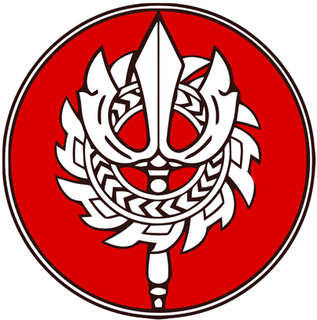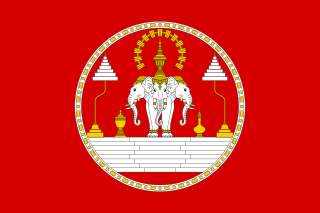| Battle of Lak Sao | |||||||
|---|---|---|---|---|---|---|---|
| Part of Laotian Civil War | |||||||
| |||||||
| Belligerents | |||||||
Forces Armées Neutralistes | |||||||
| Commanders and leaders | |||||||
| ? | |||||||
The Battle of Lak Sao, fought between November 1963 and January 1964, was a major engagement of the Laotian Civil War. In November 1963, General Phoumi Nosavan, who held the reins of military power in the Kingdom of Laos, launched a military offensive against North Vietnamese invaders that cut across the northern panhandle of the nation. Although unsupported in this proxy action by his backers in the U.S. Embassy, he went ahead with his plan to push northwards from Nhommarath, then veer eastwards to the Vietnamese border. Phoumi's Central Intelligence Agency (CIA) advisors warned him that the North Vietnamese would retaliate, but he disregarded them.

The Laotian Civil War (1959–75) was fought between the Communist Pathet Lao and the Royal Lao Government, with both sides receiving heavy external support in a proxy war between the global Cold War superpowers. It is called the Secret War among the CIA Special Activities Division and Hmong veterans of the conflict.
Major General Phoumi Nosavan was a military strongman who was prominent in the history of the Kingdom of Laos; at times, he dominated its political life to the point of being a virtual dictator. He was born in Savannakhet, the French Protectorate of Laos, on 27 January 1920. Originally a civil servant in the French colonial administration of Laos, during the last year of World War II he joined the resistance movement against the Japanese occupiers. Exiled from 1946 to early 1949 for his opposition to French return to colonizing Laos, he returned to his native soil to begin a military career in 1950 after the collapse of the anti-French Lao Issara government. By 1955, he was Chief of Staff of the brand-new Royal Lao Army. While in that position, he was largely responsible for appointing senior officers into command positions in the Military Regions of Laos. Following that, in 1957 he was the first Lao officer to be schooled in France at the École de Guerre. While in France, he became acquainted with Central Intelligence Agency operative John F. "Jack" Hasey. Phoumi returned to Laos to become a founding member of the Committee for the Defence of National Interests on 17 June 1958. On 25 December 1959, he took control of the capital of Vientiane and of the nation in a bloodless coup.

The Kingdom of Laos was a constitutional monarchy that ruled Laos beginning with its independence on 9 November 1953. The monarchy survived until December 1975, when its last king, Savang Vatthana, surrendered the throne to the Pathet Lao, who abolished the monarchy in favor of a Marxist state called the Lao People's Democratic Republic, which has controlled Laos since.
Contents
The Royal Lao Army (RLA) reluctantly carried out its mission until it met with stiff resistance. At that point, they tended to flee rather than fight. As fighting occurred throughout December 1963, two elite RLA units, the 11th and 55th Parachute Battalions, were rendered ineffective by the communists, and by a faulty parachute drop. A battalion of volunteers was also dispersed by the People's Army of Vietnam (PAVN). The Royal Lao Armed Forces (FAR) ended the operation in early 1964, having lost control of the Nakay Plateau to the communists. This, following the Battle of Luang Namtha, resulted in two disastrous defeats in just two years for the Royal Lao Government (RLG).

The Royal Lao Army, also designated by its anglicized title RLA, was the Land Component of the Royal Lao Armed Forces (FAR), the official military of the Kingdom of Laos during the North Vietnamese invasion of Laos and the Laotian Civil War between 1960 and 1975.

The People's Army of Vietnam, also known as the Vietnamese People's Army (VPA), is the military force of the Socialist Republic of Vietnam. The PAVN is a part of the Vietnam People's Armed Forces and includes: Ground Force, Navy, Air Force, Border Defence Force, and Coast Guard. However, Vietnam does not have a separate Ground Force or Army branch. All ground troops, army corps, military districts and specialised arms belong to the Ministry of Defence, directly under the command of the Central Military Commission, the Minister of Defence, and the General Staff of the Vietnam People's Army. The military flag of the PAVN is the flag of the Socialist Republic of Vietnam, with the words Quyết thắng added in yellow at the top left.

The Royal Lao Armed Forces, best known by its French acronym FAR, were the official armed defense forces of the Kingdom of Laos, a state that existed from 1949 to 1975 in what is now the Lao People's Democratic Republic. The FAR was responsible for the defense of the Kingdom since its independence in October 1953 from France.




